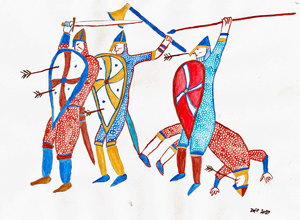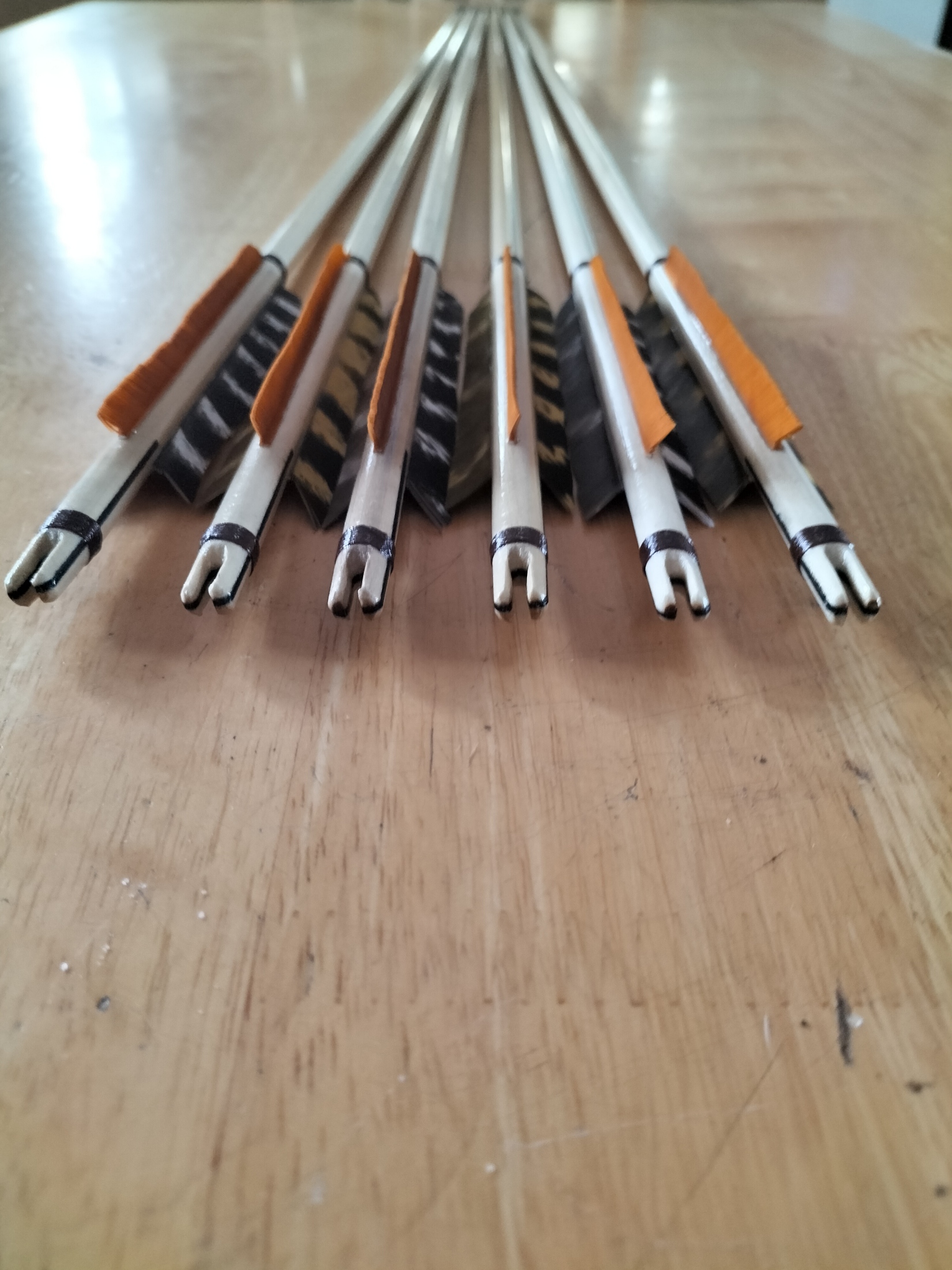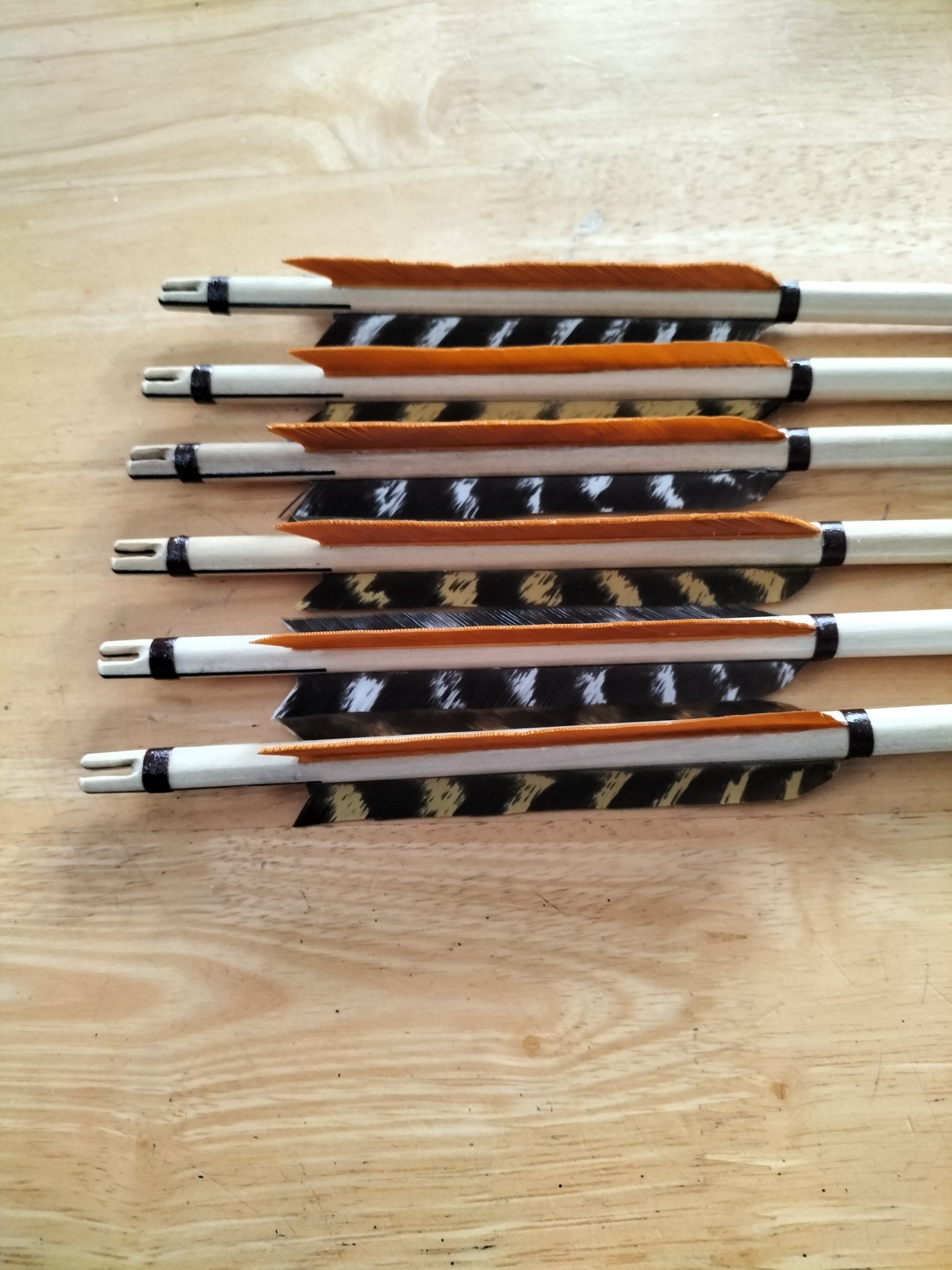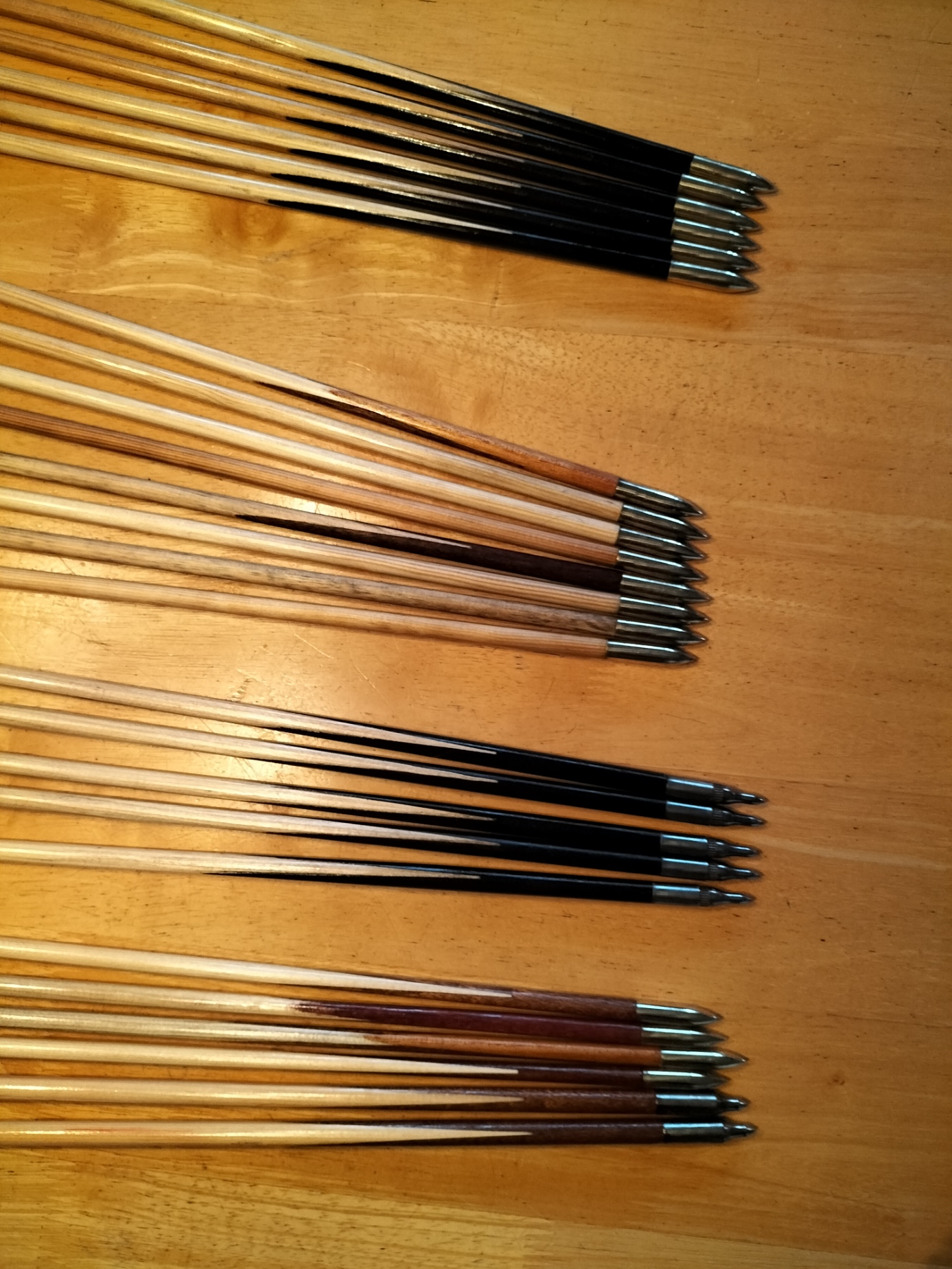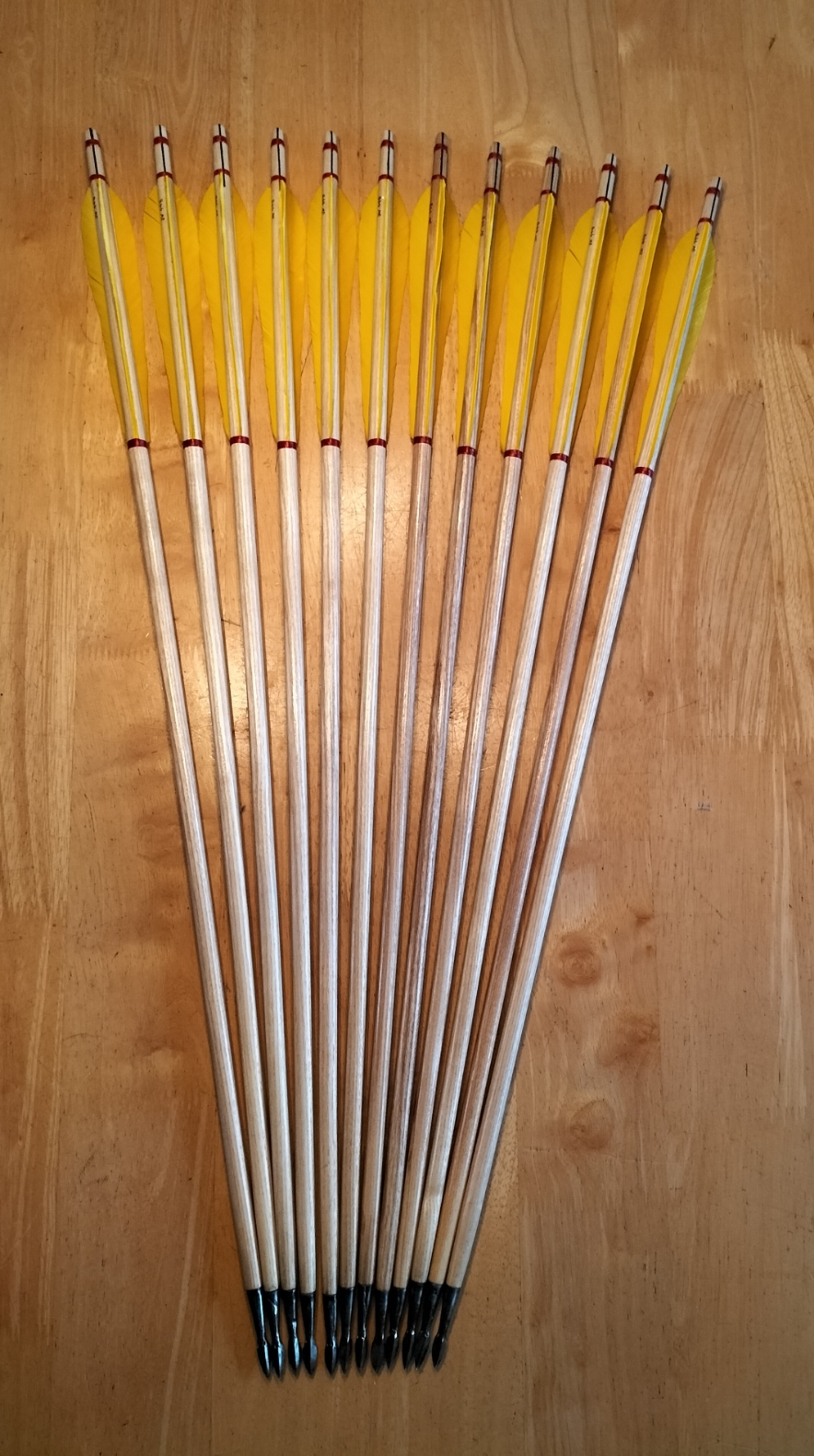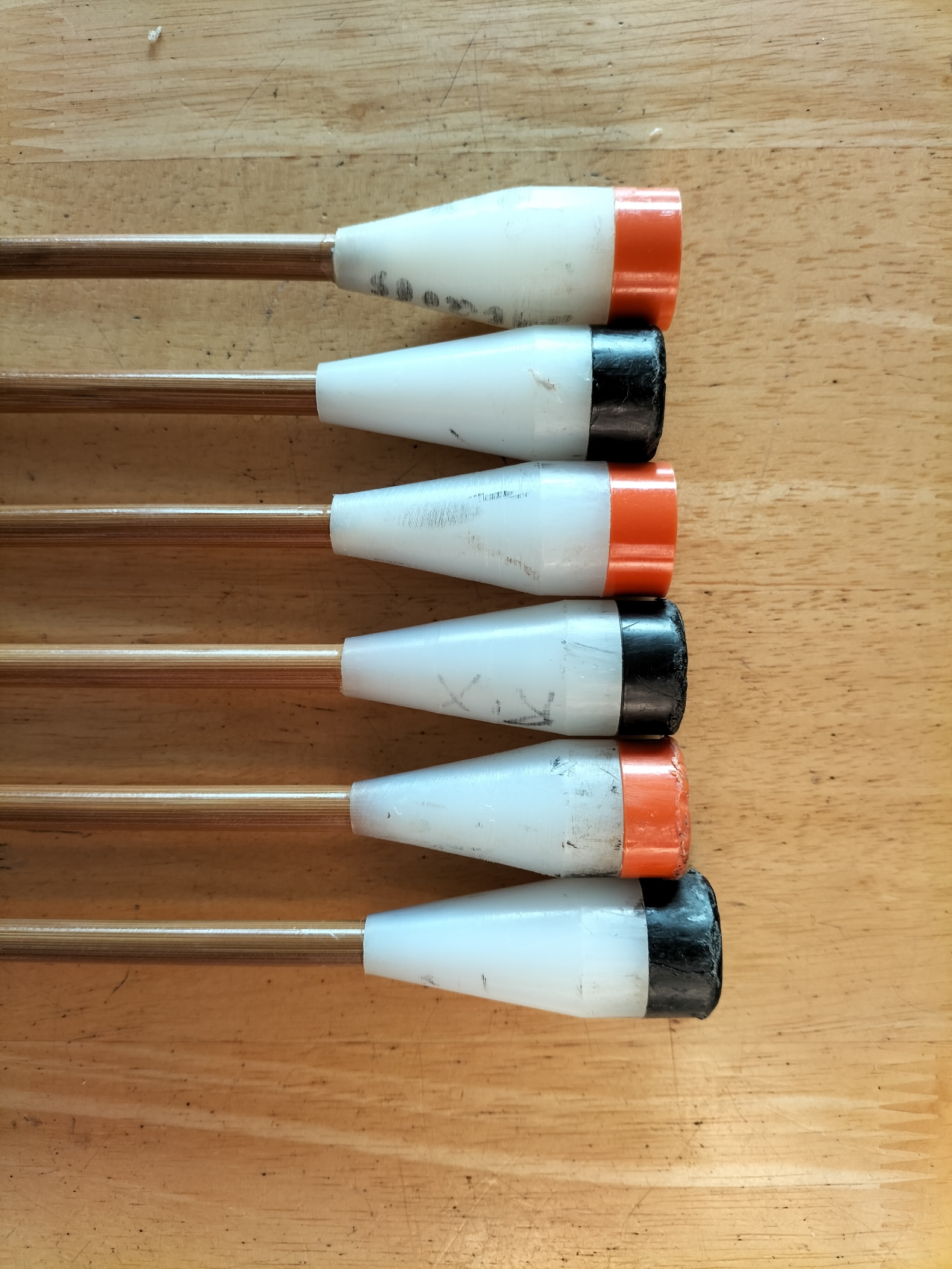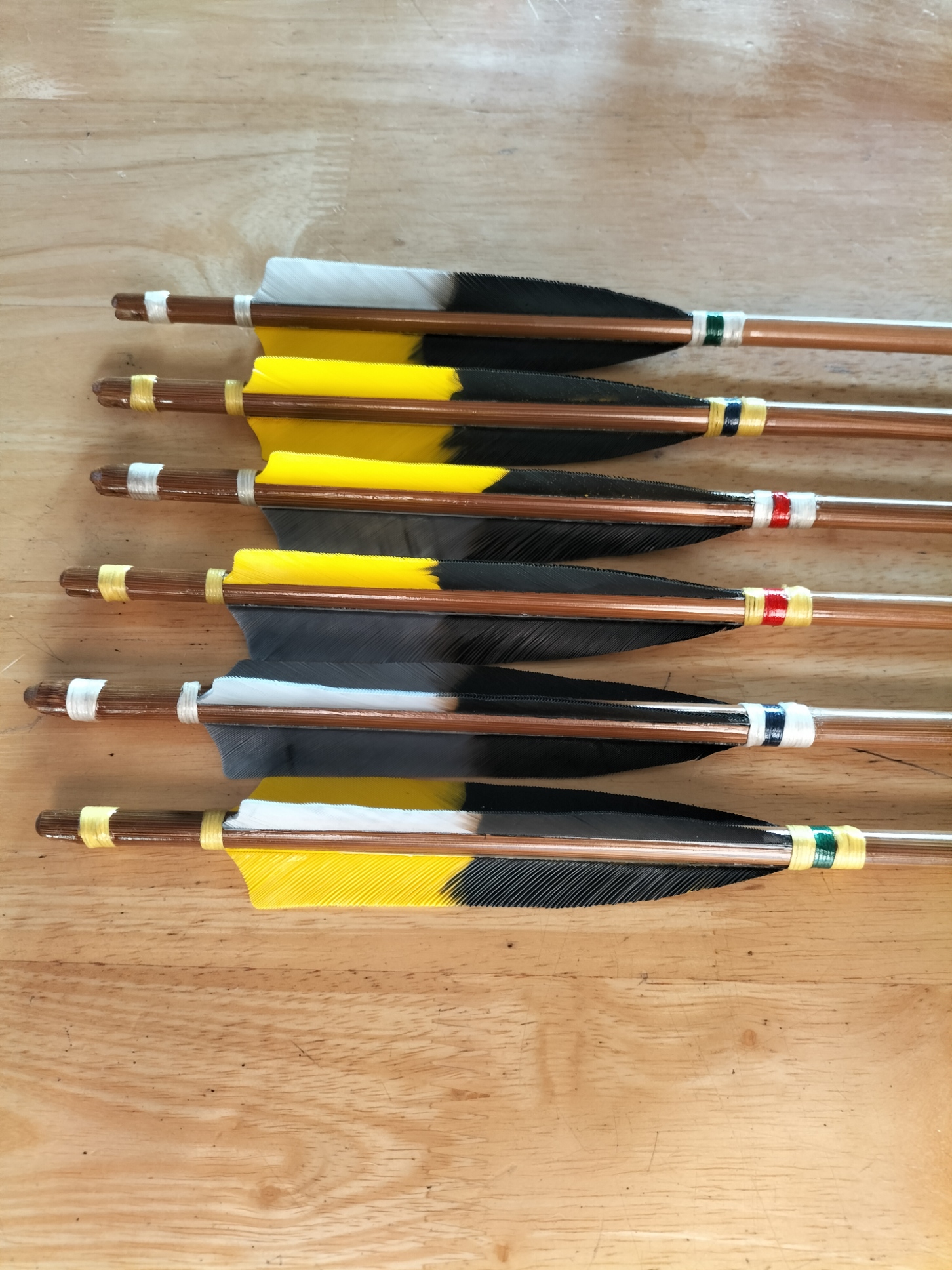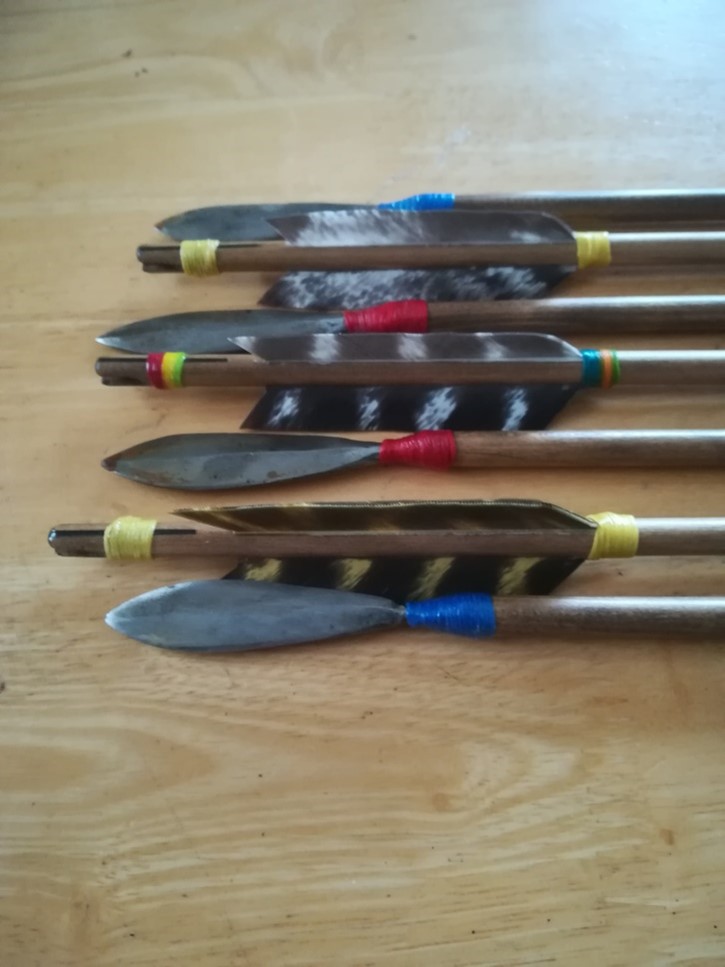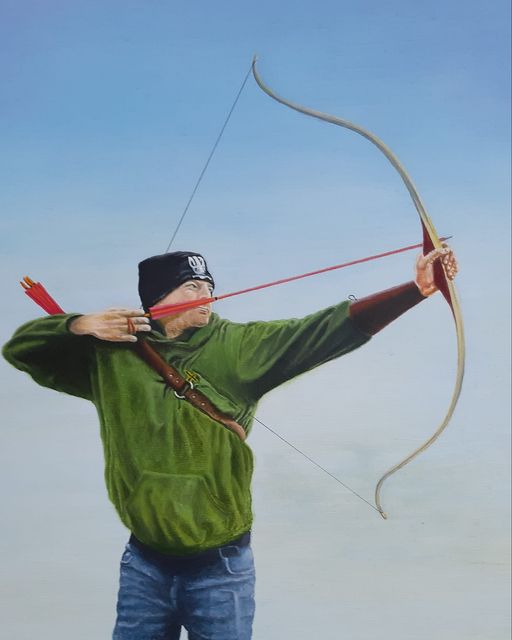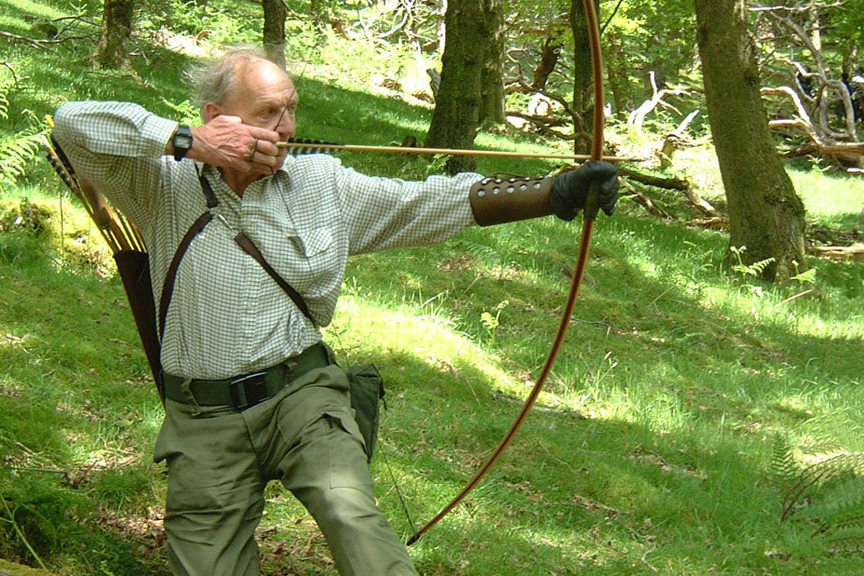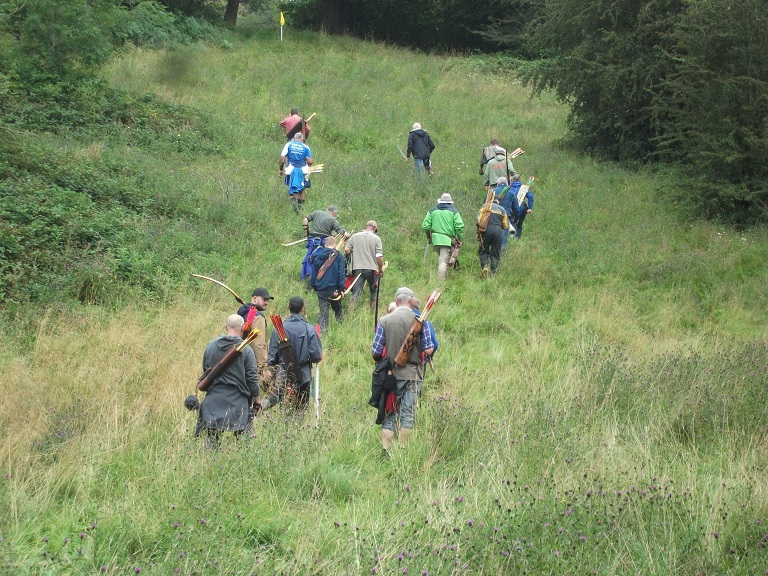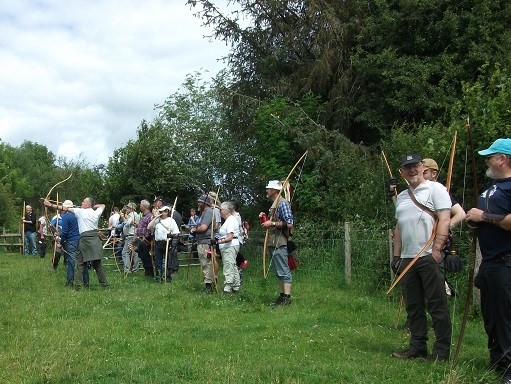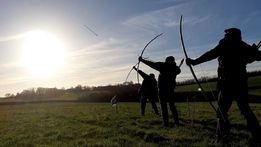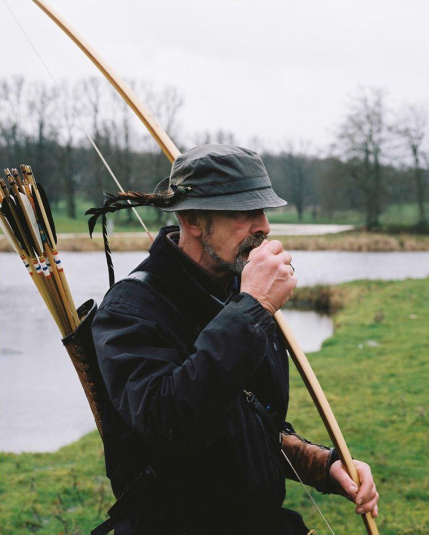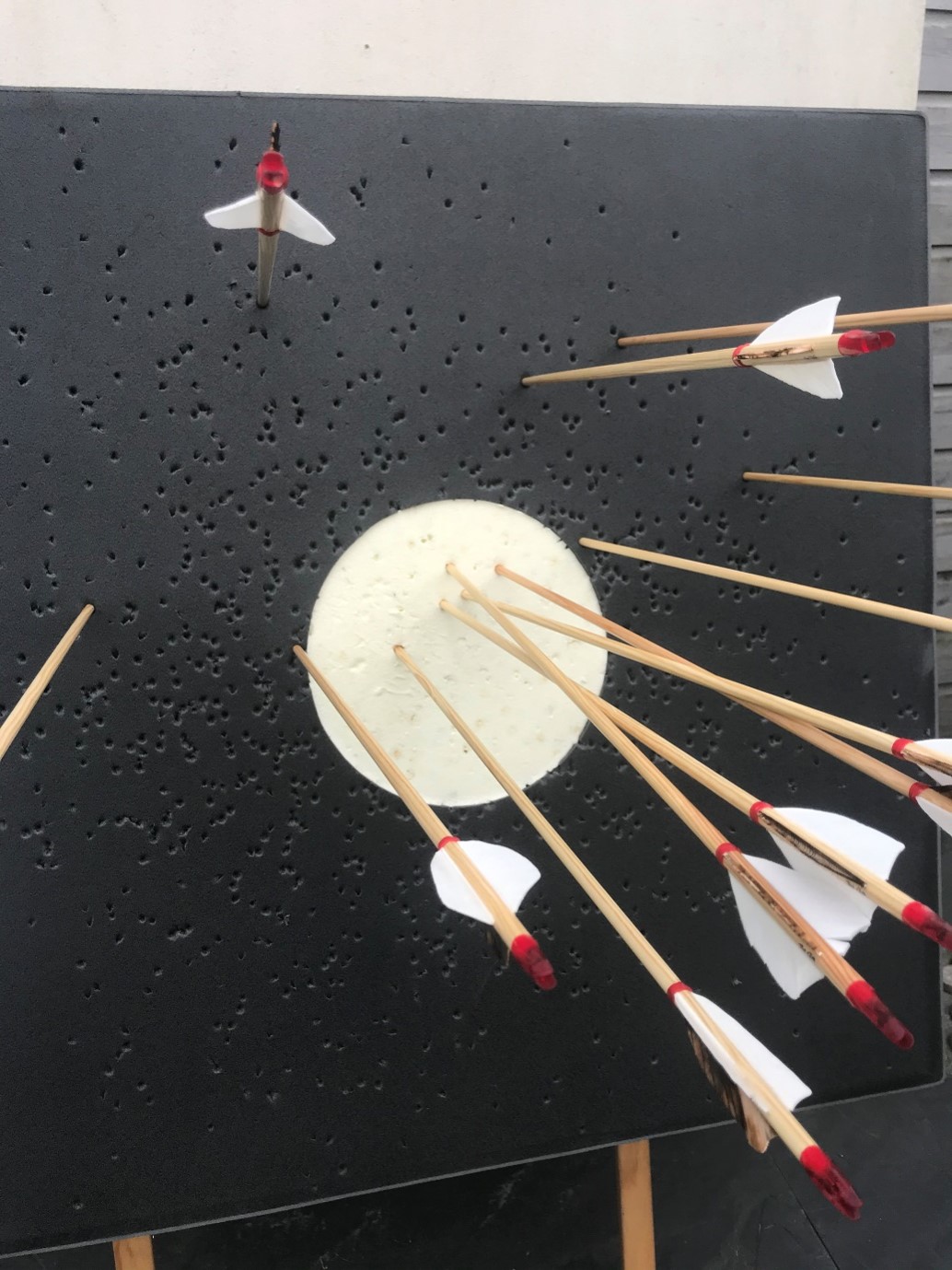Arrow Characteristics
The following is not a definitive guide but illustrates what I’m looking for to make a properly balanced set of arrows to match bow, archer and intended use.
As far as each of the properties described are concerned it is very difficult to obtain absolute measurements as there are too many variables in play to eliminate those not being examined experimentally, not least of which is the consistency of the archer.
What is practical however is to gain a good idea of relative effects; to give an extreme example, popinjay fletching on otherwise the same shaft compared with ordinary 4" parabolics do not travel as far, although we can be a little more refined than this.
Weight (or Mass)
A wooden arrow needs to be heavy enough to take the energy out of a wooden bow, otherwise a shock wave is set up in the bow limbs often felt as vibration.
10 grains per pound draw weight seems to be a good starting point, with heavier arrows at up to about 12gn/lb for short range work and lighter for distance, no less than 9gn/lb ideally.
The exception to the rule is flight arrows which might be as low as 6gn/lb but these will reduce the life of the bow, so should not be shot often and always from a well-warmed up bow.
Spine
A measure of the intrinsic stiffness of a piece of dowel.
The spine index should be near equal to or stiffer than the draw weight at the point of loose. The “wiggle" in the arrow, as it corrects for the paradox, ensures it will fly true.
A stiffer spine at short range can be desirable as it will reduce the amplitude of the oscillations (posh for wiggle) leading to a straighter flight over a short distance.
Whilst there appears to be no direct correlation between stiffness and weight, stiffer arrows do tend to be heavier, so if the weights are matched the spines will generally be fairly close.
Point of Balance
Whilst not strictly at the fulcrum of the finished arrow, this is measured from the base of the pile once the pile is fixed, the shaft and any nock-seat shaped.
This allows the set to be brought to balance without stripping fletching and binding off.
For most arrows 2/5ths of the distance behind the pile works well. For short range work it may be pushed forward (usually with a heavier pile); for distance backwards. Flight arrows work well with the balance point 9/20ths or so of the distance back.
Variations of around 1/8" either way appear to have little effect on arrow performance across the set.
Surface Area (or Drag)
The surface area of a Gateway 3" shield is about 45% greater than a 3" parabolic fletch, additionally the shield has a poorer aerodynamic shape.
Similarly, a 4" parabolic has about 55% more surface area. It will therefore have greater drag which is useful for straightening the arrow up faster at short ranges.
Keeping the shaft profile the same, size and shape of fletch will therefore have considerable influence on arrow trajectory and, ultimately, range.
Similarly, spinning the fletch increases accuracy at the cost of range.
The surface area of a 9/32" 30" shaft is about 56% of that of a 1/2" shaft of the same length, although the range of shaft diameters suitable for a given bow tends to be dictated by draw weight at the point of loose.
Profile
Bobtailing provides a better aerodynamic shape, and therefore better range.
The taper is generally very slight and has little effect on the spine of the shaft. It is probably of little value at short ranges.
If the shaft needs to be barrelled, usually in order to fit a lighter pile (typically for flight arrows), the natural shape of most things that swim or fly is with the wider part of the body forward (confusingly called breasting).
If you'd like your own copy, please download a short paper on arrow performance, design and build here.
